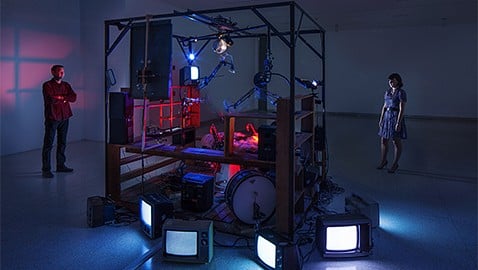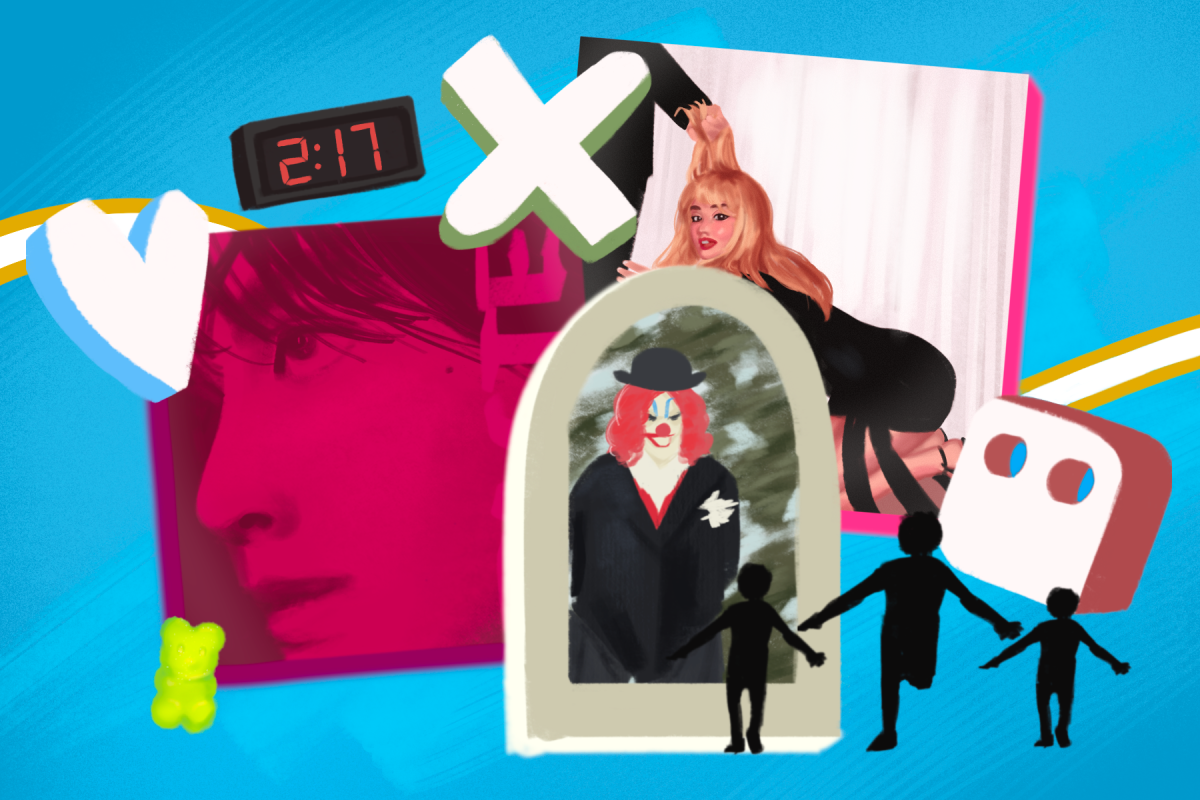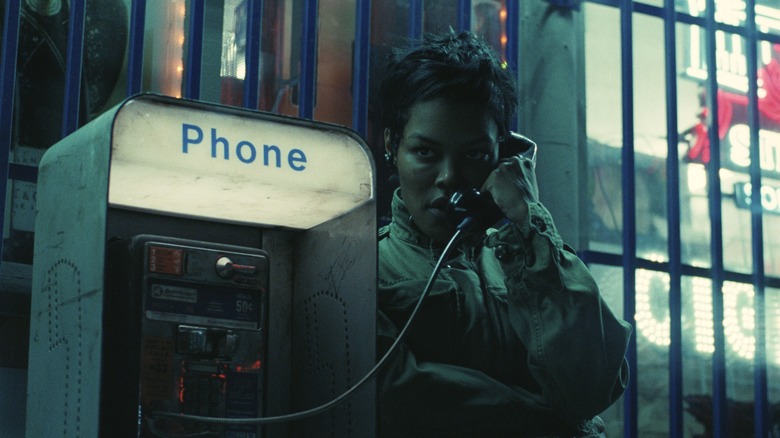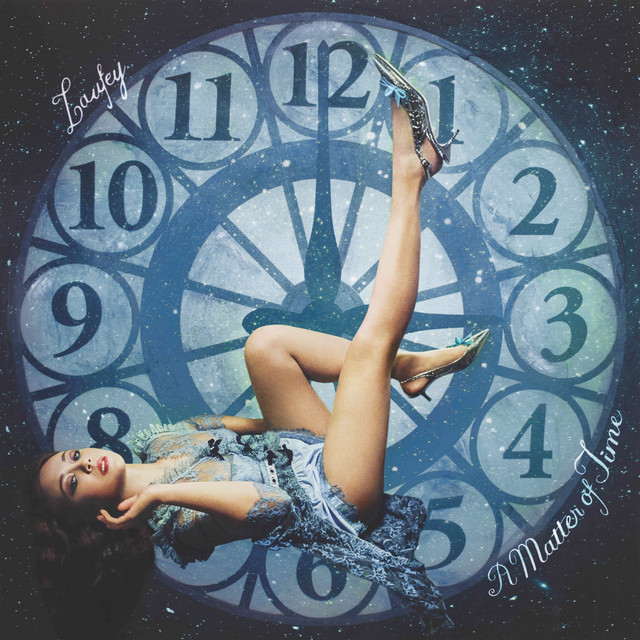Canadian visual artists Cardiff and Miller explore time and perception in this retrospective exhibition at the MCASD La Jolla
It was hard for a movie like “Memento” to successfully toy with time and the way it’s perceived. But it’s even rarer to find a visual art piece to accomplish the same. “Lost in the Memory Palace,” the current exhibit at the La Jolla branch of the Museum of Contemporary Art, does just that. According to the press release, “Lost” is a series of installations “where time slows down and is altered.” And that’s one way to look at the survey of multi-media works by Janet Cardiff and George Bures Miller, two Canadians that have been collaborating since the 1990s. It’s definitely a valid perspective, too. The entire installation — a flood of visual and sonic stimuli — is a look at the artists through time: The pieces collected here range from 1995 to 2013. Just walking through the exhibit is to see snapshots of the artists’ careers and, simultaneously, larger progressions over time.
The individual installations lend themselves to this kind of interpretation as well. Two of the pieces are constructed as in-use living quarters, though the human detritus that fills them makes it clear that the inhabitants are a neurotic bunch. So the experience of these pieces is, on the one hand, that of a snapshot and of seeing the flow of these invisible individuals slowed to absolute zero. At the same time, these pieces, through the use of various pre-recorded narrations, expand into stories and throw you back through time.
“Road Trip” lends a visual aspect to the phrase “time out of joint.” It’s a 15-minute loop of a slideshow depicting a man’s road trip across Canada paired with a recording of a conversation between (seemingly) the man’s grandson and a female companion. At one point, the grandson complains that the slides from the road trip are out of order. The woman rearranges the slides; in front of the audience, the artists are rearranging time itself.
But one thing that makes the whole exhibit really impressive is that there are entirely different lenses to view the exhibit through. One of the more interesting of these is a phenomenological exploration of the separation between perceiver and perceived. Even ignoring the most obvious separation — that the audience is just seeing the artist’s image of some reality, not that reality itself — most of these pieces have perspectives layered on perspectives layered on perspectives. The subject of “Road Trip” is the road trip itself. What the audience experiences is not that, however. They see two people looking at slides that are themselves mere representations of the trip. Keep up here: Between you and the subject, there are two whole layers of interpretation (still ignoring the additional layer of the artist).
This same separation is true of “The Dark Pool,” another mixed-media piece that is a combination bedroom/workshop holding other recorded narratives. The subject of this piece is a mysterious body of water. Were it not for the title, though, one might miss that. The subject is addressed by various indirect means: a diorama, the recorded narratives, a rudimentary chemistry set. The layers are myriad here as well. Take the diorama, for instance, which depicts the mysterious pool. It is a representation created by the person who ostensibly lives in the room. The person who lives in the room is the interpretation of the artists themselves. The audience sees this interpretation through appropriately dim lighting. Again, the audience is separated from the subject by layers of interpretation. And then, at the same time as the audience is interpreting all of this, the security guard escort that is required for this exhibit is watching you see the exhibit. You are no longer the all-seeing eye of objective interpretation; you are being interpreted yourself! (That last layer might not have been the intention of the artists, but was too interesting to leave out.)
There are other pieces whose layers of audience-subject separation deserve similar deconstruction, but those are probably best parsed by the reader at the museum itself. At this point, unfortunately, the one piece that doesn’t fit into either of the previous perspectives must be reprimanded. “Experiment in F# Minor” is chiefly a sonic piece. It is a room containing an old folding table covered by some 30 speaker cones. The quality and fullness of the music these speakers emit is, as one might expect, astounding. Standing alone in the room feeling the music smothering the air around you (and thus you along with it) is a powerful experience.
But, at least to the musically untrained author, there was no apparent cohesion between this piece and the rest of the exhibit. The exploration of time and the relationship between observer and reality was nowhere to be found. Perhaps this is some Schopenhauerian commentary on how music is the one medium where separations are stripped away, forcing the observer to experience reality as it is. That might be too much of a stretch, though. So, while “Experiment” itself is a strong piece, it inserts a slight air of confusion into the experience of the entire exhibit (although that might be the point — the artists are probably much smarter than your author).
That being said, “Lost in the Memory Palace” is still an intriguing aesthetic study in phenomenology, as well as a powerful look at the audience’s perception of time. The mixed-media platform serves the artists well, and the audience (probably) cannot avoid leaving the exhibit without considering how they themselves interact with the time and space around them.








